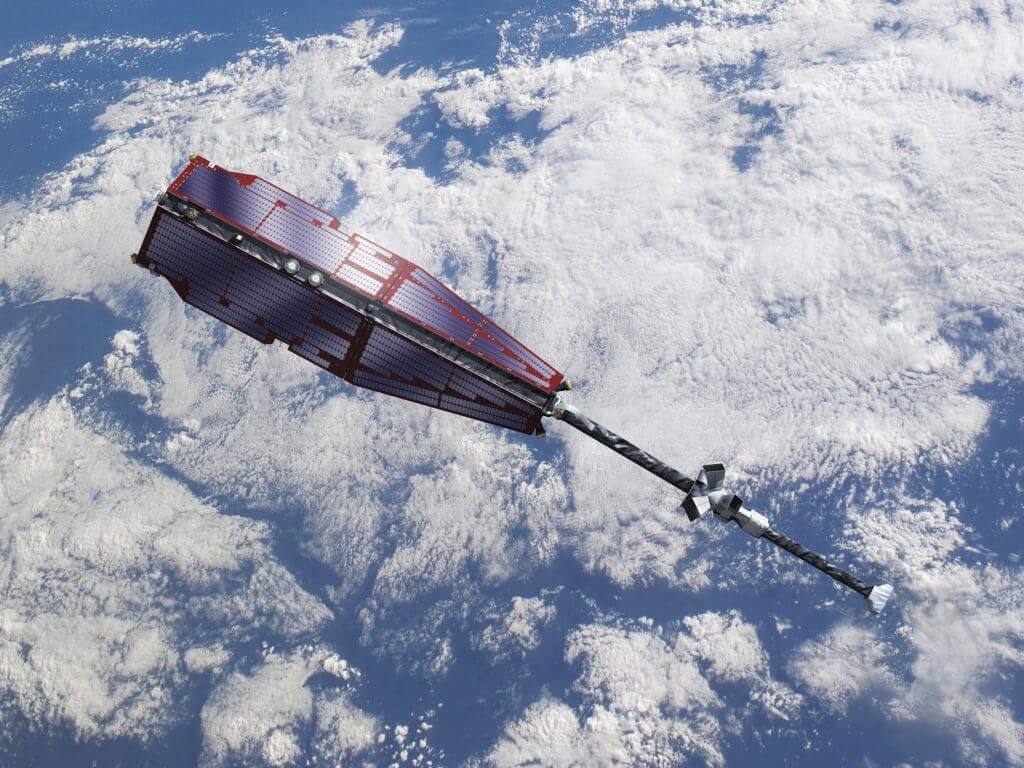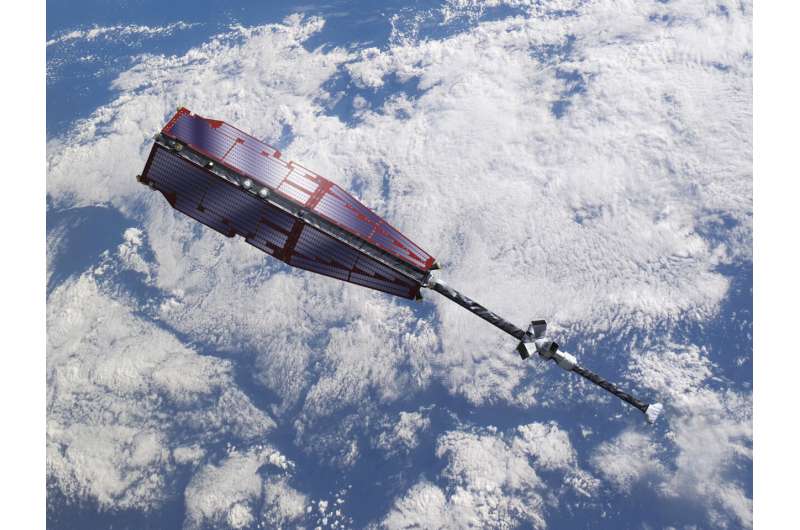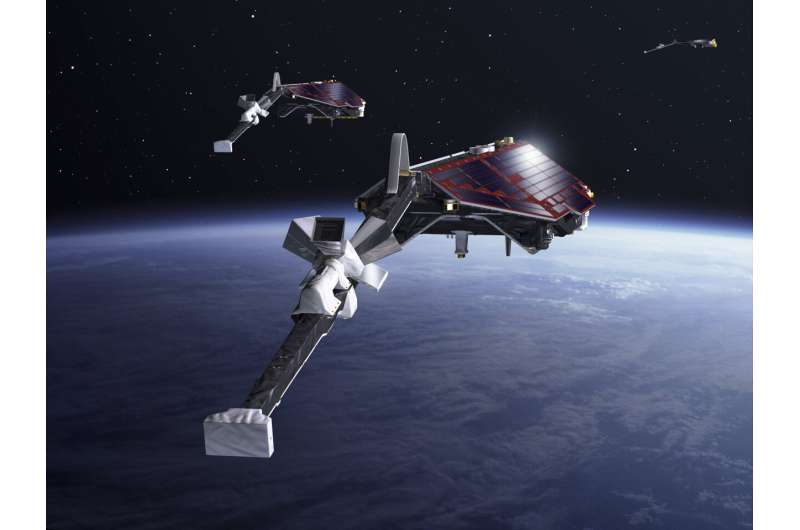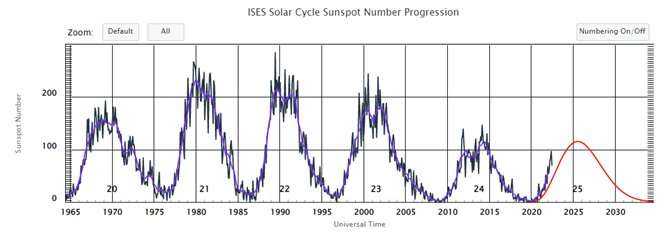
ESA’s Swarm dodges collision during climb to escape sun’s wrath (Image Credit: Phys.org)

A swarm? Of bugs?
Not quite—Swarm is ESA’s mission to unravel the mysteries of Earth’s magnetic field. It’s made up of three satellites, A, B and C—affectionately known as Alpha, Bravo and Charlie.
What happened?
A small piece of human-made rubbish circling our planet—known as space debris—was detected hurtling towards Alpha at 16:00 CEST, on 30 June. A potential collision was predicted just eight hours later, shortly after midnight. The risk of impact was high enough that Alpha needed to get out of the way—fast.
There’s rubbish in space?
A lot of it. Old satellites, rocket parts and small pieces of debris left over from previous collisions and messy breakups. Each little piece can cause serious damage to a satellite, and larger ones can destroy a satellite and create large amount of new debris.
Was this the first time this has happened?
That day? Maybe. Ever? No way. Each one of the ESA’s satellites has to perform on average two evasive maneuvers every year—and that’s not including all the alerts they get that don’t end up needing evasive action.
Then what’s the big deal?
Carrying out evasive action—known as a ‘collision avoidance maneuver’—requires a lot of planning. You have to check that you’re not moving the satellite into a new orbit that puts it at risk of other collisions and you have to calculate how to get back to your original orbit using as little fuel and losing as little science data as possible.

ESA’s Space Debris Office analyzes data from the US Space Surveillance Network and raises the warning of a potential collision to ESA’s Flight Control and Flight Dynamics teams, usually more than 24 hours before the piece of debris comes closest to the satellite.
In this case, they only got eight hours’ notice.
And worse, the alert meant that the Swarm team was now suddenly racing against two clocks. Another maneuver was planned for just a few hours after the potential collision and had to be canceled to give Alpha enough time to duck out of the way of the debris. That maneuver was also very time sensitive and had to be entirely replanned, recalculated and carried out within a day.
What was the other maneuver?
Alpha and Charlie were climbing to escape the wrath of the sun. Both satellites needed to carry out 25 maneuvers over a period of 10 weeks to reach their new higher orbits. One of Alpha’s maneuvers was planned for just a few hours after the possible collision.

Wait, the sun is killing satellites?
Our sun is entering a very active part of its ‘solar cycle’ right now. This activity is increasing the density of Earth’s upper atmosphere. Satellites are running through ‘thicker’ air, slowing them down and requiring them to use up more limited onboard fuel to stay in orbit. Alpha and Charlie were moving up into a less dense part of the atmosphere where they can stay in orbit and collect science data hopefully for many more years and mission extensions.
What would have happened without this maneuver?
Alpha would have drifted towards Charlie and the orbits of the two satellites would have soon crossed. This would have left the overall Swarm mission ‘cross-eyed’, limiting its ability to do science until another set of maneuvers realigned Alpha and Charlie.

Is Swarm OK now?
The Swarm team got to work with a reaction time to rival an Olympic sprinter. Working together with the Flight Dynamics team at ESA’s mission control, they planned and carried out the evasive action in just four hours, and then replanned and carried out the other maneuver within 24 hours.
Alpha is now safe from a collision with that piece of debris and has completed its climb to safer skies alongside Charlie. But there is lots of debris out there, and this shows with how little warning it can threaten a satellite.
How are teams keeping up with all these collision alerts?
With new tech, more sustainable behavior and by taking space debris responsibility very seriously. The team is building new technology to track more debris, developing new computational tools that will help them plan and carry out the rapidly increasing number of evasive maneuvers, and working on guidelines that limit the amount of new rubbish they and other satellite operators add to the problem. The team is even working on ways to grab larger pieces of debris and remove them from orbit using a “space claw.”
ESA’s Swarm dodges collision during climb to escape sun’s wrath (2022, July 14)
retrieved 15 July 2022
from https://phys.org/news/2022-07-esa-swarm-dodges-collision-climb.html
part may be reproduced without the written permission. The content is provided for information purposes only.





